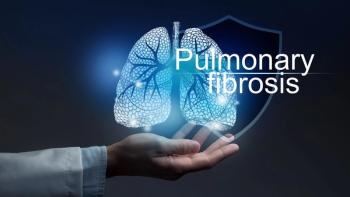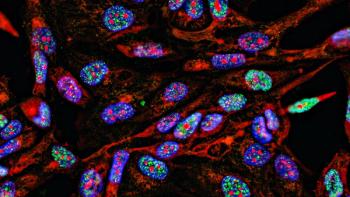
Equipment and Processing Report
- Equipment and Processing Report-12-20-2017
- Volume 10
- Issue 13
Manufacturing Microparticles in a Single Step
Orbis Biosciences’ Optimµm Platform delivers microparticulate dosage forms with controlled-release and taste-masked properties in a single manufacturing step.
Orbis Biosciences’ Optimµm Platform, an encapsulation technology developed for oral drug products, won the 2017 CPhI Pharma Award for Excellence in Pharma: Formulation. In an interview with Pharmaceutical Technology, Nathan H. Dormer, vice-president of Research & Development, Orbis Biosciences, shares insights on the challenges in manufacturing controlled-release drug-delivery systems, the limitations of traditional methods used to coat microparticles, and the innovation behind Orbis’ Optimµm Platform.
PharmTech: What are the challenges in manufacturing controlled-release microparticle drug delivery systems?
Dormer: Micro- and nanoparticulate powders are manufactured with a myriad of processes, but the primary motivation is integration of controlled-release mechanisms to govern particle disintegration and API dissolution. The requirement of achieving controlled release universally relies on physical sequestration of the API via one or more physicochemical mechanisms, which typically requires multiple steps. A powder form, however, can present unique challenges to achieving controlled-release coatings due to the high surface area of the particles, the irregular sizes of particles within the powder, and the number of process steps required to ensure predictable performance and reasonable quality of the final product. Nonetheless, taste-masking can still be achieved with powders when a coating or other chemical modification is applied.
PharmTech: What are the different steps involved in coating microparticles?
Dormer: The most straightforward method for achieving taste-masking and controlled release with coated powders involves a two-step process in which a precursor particle is manufactured by various means, then coated with one or more layers containing controlled-release materials. Precursor particles can either be finely-milled API crystals, crystalline or amorphous API co-mixed with inert bases or controlled-release materials, or an entirely inert core without API. These three types of precursors can be manufactured by one or more means, which include traditional vibratory methods, congealing/spinning disk atomization, prilling, hot-melt extrusion (HME) and spheronization, aqueous dispersion, blending/bulking, electrohydrodynamic spraying (EHDS), spray drying, or ion exchange resins. Material selection for the precursor particle relies on process capabilities, the desired end-product controlled-release properties, API thermal and oxidative stability, and the desired physical properties (such as surface features, density, friability, and hardness, among others). Once the precursor microparticulate is manufactured, the product is then sieved to remove out-of-specification particles and coated for taste-masking, delayed-release, or stability-enabling properties. The precursor particle advances to subsequent traditional coating steps using fluidized beds, Würster coaters, dry polymer coating, spray coating, pan coating, or coacervation. The materials of choice for the secondary coating steps are selected for reasons commensurate with the precursor particles (i.e., material compatibility, controlled-release behavior, and stability). The final dosage form can then be bottled for resuspension at time of use, packaged in sachets or sprinkle capsules, placed in dissolving tongue strips, co-lyophilized with other materials for orally-disintegrating tablets (ODTs), or reconstituted in syrup if liquid stability is not an issue.
PharmTech: What are the limitations of traditional technologies?
Dormer: The approach of manufacturing controlled-release powders by adding multiple coating steps to API-rich precursor particles is an accepted method for powder dosage forms. These techniques are, however, divergent from state-of-the art approaches that focus on chemical modification or comlexation of the API and/or substrate using ion-exchange resins. The main advantages that ion exchange resins can yield are liquid stability and deterring abuse of scheduled APIs, such as opiates and amphetamines. Although it is innovative, drug complexation involves a number of manufacturing steps and quality control aspects that far surpass that of simple bead layering, and it still usually includes a final coating step. The major criticisms of all traditional methods, however, focus on the sheer number of process steps to achieve particle size distributions that contain a considerable amount of fine and large out-of-specification particle sizes.
PharmTech: Can you tell us more about Orbis’ Optimµm Platform? What challenges does it solve and what makes the technology unique?
Dormer: Orbis’ Optimµm Platform leverages its Precision Particle Fabrication technology to deliver oral pharmaceutical products that have both controlled release and taste-masked attributes. Orbis’ controlled-release capabilities are unique in that they are achieved in a single manufacturing step and do not require additional coating steps to achieve taste-masking, extended release, or modified release. Optimµm technology incorporates vibration with a scalable nozzle approach to create both microspheres and microcapsules in a single manufacturing step. The Optimµm technology produces uniform microspheres or microcapsules exhibiting a narrow size distribution, offering precise control over particle morphology (e.g., porosity, coating thickness, etc.) and therefore precise control over the release kinetics. These release kinetics can include extended or modified release options. The flexibility of Optimµm technology allows for production of a wide range of particle materials, sizes, and desired characteristics in a single-step process that scales linearly by simply adding additional nozzle heads. Scale-up has been successfully validated with the commissioning of Orbis’ cGMP compliant manufacturing system, which has a minimum of 60 times more throughput than a laboratory-scale unit.
PharmTech: Can you provide some examples of how the Optimµm Platform was used to address key formulation or manufacturing challenges?
Dormer: In one example, Orbis used its novel core-shell technology to enable modified-release options such as enteric or reverse-enteric delivery in a format-flexible powder. Specifically, Orbis created an enteric-coated bead with a pure ibuprofen core. In-vitro dissolution shows that API release is limited to less than 10% for two hours in gastric conditions with immediate release when exposed to neutral pH similar to the small intestine. This modified-release approach is accomplished by fabricating a microcapsule with an engineered shell of uniform thickness designed for targeted release specifications. Efficiencies are gained using the Orbis process by eliminating the secondary coating step for applying the enteric coating.
In another example, Orbis used its Optimµm technology to create an immediate-release, taste-masked, microcapsule-based powder, which contained the very bitter drug, prednisone. The prednisone powder was found preferable over the traditional pill in taste testing, and had similar taste to a placebo microsphere powder with no encapsulated drug. Additionally, the powder provided equivalent total body exposure of prednisone and active metabolite, prednisolone, in a randomized, open-label, two-product, two-period, crossover study in a fasted state comparing 10-mg prednisone taste-masked microspheres to a 10-mg prednisone tablet.
Articles in this issue
almost 8 years ago
Standardizing SerializationNewsletter
Get the essential updates shaping the future of pharma manufacturing and compliance—subscribe today to Pharmaceutical Technology and never miss a breakthrough.





